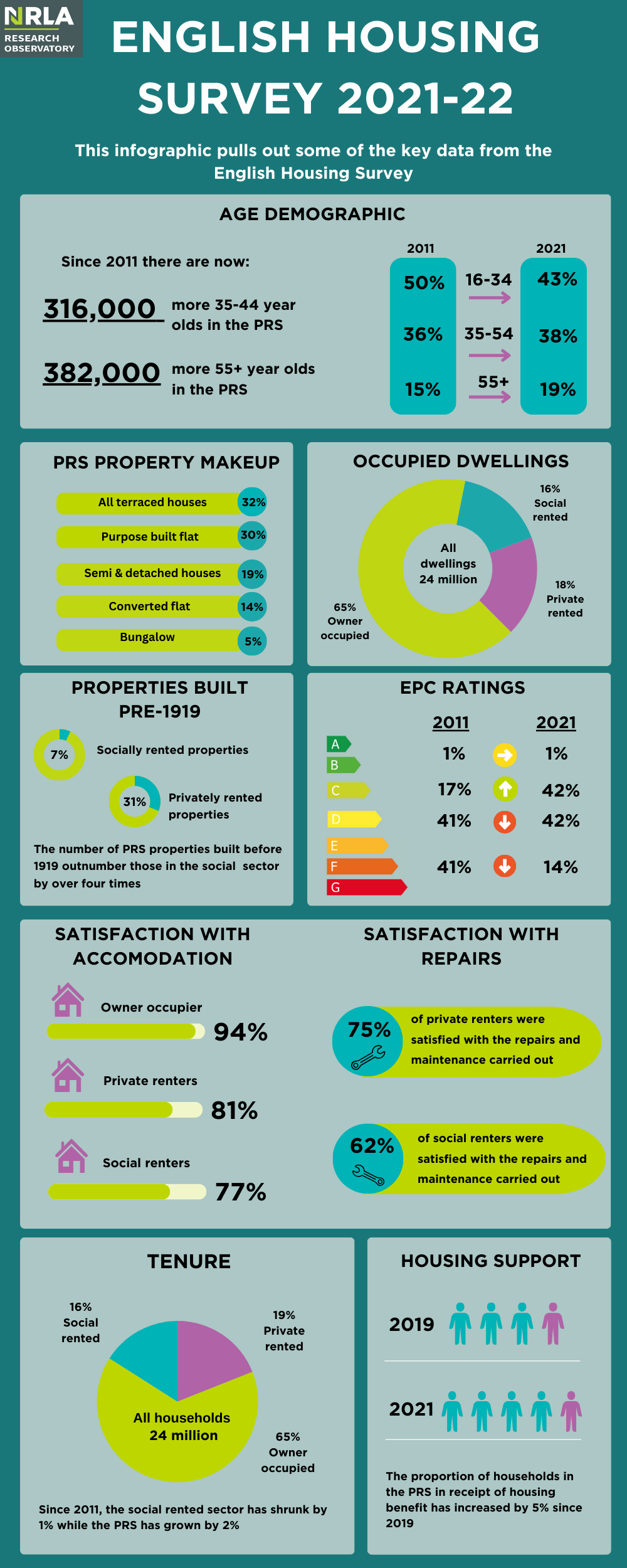

English Housing Survey 2021-22: key points
Introduction
The English Housing Survey (EHS) is an annual national survey that offers insights and data regarding England's housing conditions. It explores various topics such as housing quality and safety; energy efficiency; household demographics; ownership and rental statistics; and the physical state of residences.
Serving as a critical resource for government decision-making, the EHS aids in tracking housing trends, shaping housing policies, and tackling issues related to housing and living standards. The NRLA frequently references it among various sources for information.
The 2021-22 English Housing Survey data was collected during the COVID-19 pandemic. This meant that face-to-face interviews were replaced with telephone interviews and internal inspections of properties were instead replaced with external inspections.
Currently, the survey is undertaken by the Department for Leveling Up Housing and Communities, although the overseeing department may vary over time.
Tenure
In England, owner-occupied homes continue to represent the majority of housing, encompassing 65% of all households, or approximately 15.6 million.
- In 2012-13, the private rented sector became larger than the social sector, as measured by the proportion of households across tenures. The private rented sector has since maintained its position as the second largest housing tenure:
- In this most recent survey, 19% (almost 4.6 million) of households in England live in the PRS.
- Meanwhile, social housing comprises 16% of the market, equating to around 4 million households.
Dwellings
A substantial portion (almost one-in-three) of the PRS consist of properties built before 1919.
This a figure that is four times higher than the social sector (7%).
Older dwellings are among the least energy-efficient. These dwellings often require substantial investment to meet minimum energy efficiency standards.
Energy efficiency
The data shows landlords in the PRS have been investing heavily in energy efficiency measures:
- Since 2010, the proportion of dwellings in the PRS of EPC band A-C has remained static.
- The proportion in bands E-G has fallen by two-thirds.
The key challenge will be moving properties currently rated 'D' into a more energy efficient band.
Tenants
The profile of tenants in the PRS is slowly but surely becoming more age-mixed, with the proportion of older tenants rising.
- One in five tenants in the PRS in reciept of housing benefit. This figure has increased by 5% since 2019.
Tenant satisfaction
Looking at the experience of tenants within the two rented sectors, tenants within the PRS are most satisfied with their accomodation and repairs and maintance compared to the social sector.
- 81% of PRS tenants are happy with their accomodation
- Three-quarters of tenants in PRS are satisfied with the maintenance carried out by their landlord.
Image 1: English Housing Survey: selection of key facts

English Housing Survey 2021-22: Key points

